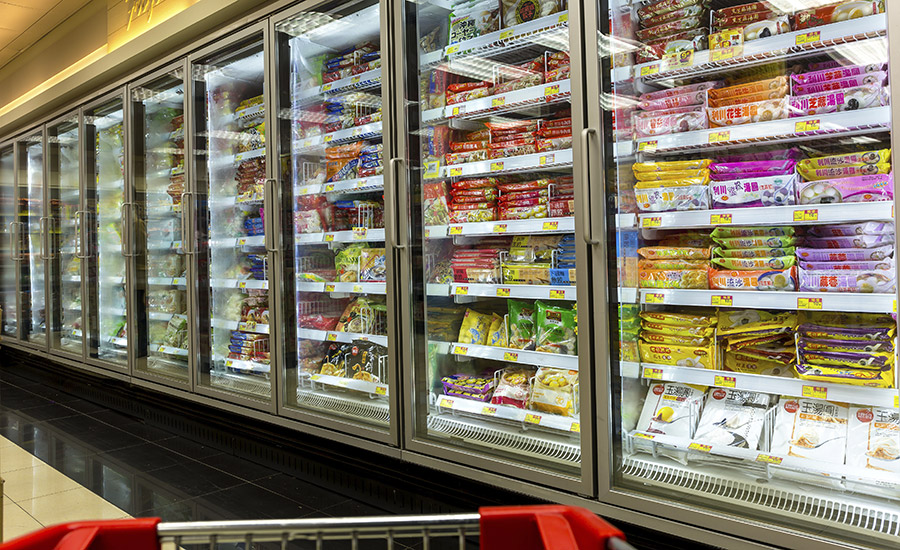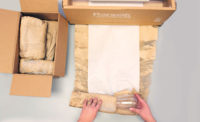Having partnered with specialty food brands for nearly two decades to create strategic design that gets results, I’ve learned more than a few things along the way. Specializing in only food CPG brands has allowed me to finely hone in on best practices that can transform packaging into a workhorse to sell itself, be it on the shelf or online. You’ve worked hard to develop your product and bring it to market, so don’t cheat yourself when it comes to the packaging design. Do it right the first time to give your product its best shot — it’s an investment in the success of your product and brand. Here are some key points to keep in mind when developing any food packaging:
1) Attract attention
Whether the product is sold online or in stores, the packaging needs to catch the eye to attract interest. If the product does not stand out and look interesting then the consumer will not look further. For online products, consider how the image looks at a thumbnail size and ensure it has enough impact.
2) Consider context
A design may look good by itself but in reality, will it be noticed on a crowded shelf? Assess the competition in the category and make sure your design and messaging stand out. For online products, consider how the design looks among competing products at thumbnail size.
3) Emphasize the name
A general best practice is that the product name should be the most prominent item on the front panel so the consumer can instantly understand what the product is. The brand logo should be secondary. There are exceptions to this rule but be sure to proceed carefully if going this route. If the product has a fanciful name that also serves as the brand logo, then this is a case where it makes sense to promote the fanciful product name, yet also make clear what the product is in common terms, not just for FDA labeling compliance but also for consumer understanding.
4) Instantly inform
A product has only about 2-3 seconds at best for a consumer to decide to pick it up or click to learn more. Secondary to understanding what the product is, the package should convey how the product is different from competitors. Thus, the front panel of a package is of most importance. Include any key selling points on the front panel as well — but if you think you have a lot of key selling points, put only the most important ones on the front and list the rest elsewhere on the package. Otherwise too much information can have less impact.
5) Show the product
Whenever possible, it’s best to show the actual product through a window of a box, pouch or bag, or other transparent part of the packaging such as outside of the label on a jar. Consumers like to see what they are buying, and this also conveys confidence in quality on the manufacturer’s part. However, you don’t want to show any undesirable parts of the product such as crumbs or broken pieces at the bottom of a pouch, or empty space at the top of a package.
Keep in mind, when it’s not possible to show the product, a high-quality photo of the product can be used, or photos of the signature ingredients or flavors — whatever makes the most sense given the product. A poor-quality photo can be a big turnoff.
6) Connect emotionally
On the back or secondary panel of a package, elaborate on the product — again, in an enticing way. This is called romance copy (literally, it romances the consumer into buying the product). Go into more detail on why the product is unique and special. Are there specific ingredients to highlight? Why should a consumer buy this product over another one? If the consumer has gotten this far — and remember, it all happens rapidly — the romance copy can clinch the sale. Touch on your brand story as space permits to enhance the emotional connection with the consumer. At the very least, indicate what the brand stands for and what its values are, in an engaging way.
7) Give usage ideas
Include ideas or ways to use the product if applicable — especially ways that may not be obvious. For example, a sauce may also make a great marinade or dressing. When the product is versatile it becomes more attractive and a better buy.
Additionally, if you have a short recipe to include, only include it if you have space for both usage ideas and the recipe. If you have to choose one, go with the usage ideas and put the recipe on the website. Usage ideas give a greater range of ideas in a smaller amount of space, and are also easier to incorporate into regular use.
8) Cross-sell other products
If there is room, reference other products or flavors in the line, or at a minimum include a general callout for the website to see the full line of products.
9) Keep it brief
All of the copy on a package should be succinct, to the point and clearly displayed and organized on the package. If there is any point of confusion, or if the consumer is overwhelmed by too much information, they will quickly move on.
Remember that for online products, all of these points still apply to the package, but even more so to the copy that accompanies the online listing. You’ll have more room to elaborate but it should still be clear and concise.
Although consumers are not able to touch or pick up a package when shopping online, you should still show panels of the package to be informative and to give a clear idea of what the full package looks like. When they receive the product, that is when they will connect tangibly with it so you want it to not only meet but exceed expectations.
10) Encourage the repeat sale
The package keeps selling even after it’s purchased. Consumers may read and re-read the package as they consume the product over time, strengthening their emotional connection with the brand or product. Some packages may be on display in the kitchen for higher visibility in the home, or be gifted. Make sure your product can live up to all these aspects.



